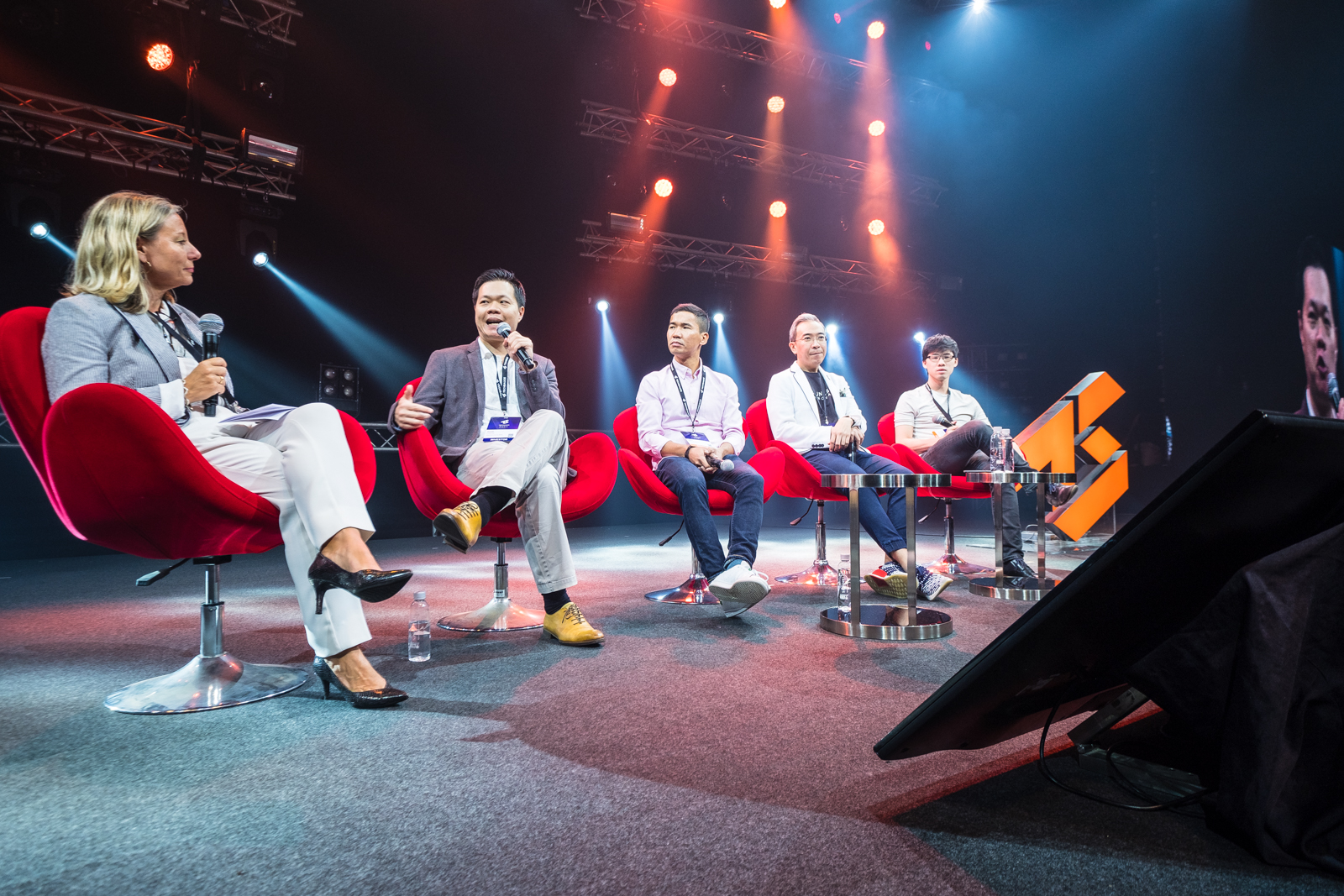Corporate Innovation: How Opening Up is a Win-Win Scenario
“What is the strategy and the core motivation for your corporations to begin working in innovations?” - with that question, moderator Ms. Susie A Ruff started the panel on running corporate innovation programs.
We all know how tech startups have been disrupting the corporate world. Most of the corporations have realized the need to move forward and innovate themselves from the inside out. That’s how the world’s largest corporate acceleration programs have been born. All of the panel speakers had their own unique answers to the question above:
Dusit Chairat, Corporate Venture Capital Fund Manager at AddVentures, says: “Our journey with corporate innovation began about a year ago. We noticed so many opportunities outside of the organization, and decided to get involved and started the internal innovation unit.”
Oko Davaasuren, Director for APAC at Startup Programs at Techstars, answered the same question: “Techstars has been around for 10 years. We started running corporate accelerators, and then we ran the first Microsoft accelerator in the US - and that’s when we realized the real opportunity behind it. So now we are working on the new accelerator with Amazon Alexa, one program in Paris and another in Dubai. We are also running many smaller events and programs around the world.”
 So the big companies are demanding more and more collaboration with startups. But how about you Champ, what do you think of that from the startup perspective?
So the big companies are demanding more and more collaboration with startups. But how about you Champ, what do you think of that from the startup perspective?
Champ Suthipongchai, Founding Partner of Creative Ventures, shared: “So, I’ve been running a couple of startups myself, and I know how hard it is. In fact, it’s all about aligning the vision of the corporate players and startups and creating the synergy. We’ve been looking at what exists in the US and what exists in South East Asia. A lot of industrial sectors and corporate sectors have been needing those new technologies - and I thought that it would be awesome bringing those technologies to Asia. And those startups themselves have been very interested in entering Asian markets - so it’s a Win-Win situation.”
How about you Thakorn? What pushed you to innovate inside of your corporation?
Thakorn Piyapan, Head of Krungsri Consumer, answered: “The innovation work is cool, but trust me: it is easier said than done. The innovation can happen in two ways: external innovation, and internal innovation. The internal innovation is the hardest, but it’s the thing we must do. You have to embrace the change and work with all the internal stakeholders and units on the innovation processes. The managers must be especially eager to embrace the change and to give up some of the old ways. We saw clear benefits of transforming the internal processes - and so embarked on that journey inside of our company.”
My experience working with the corporate innovation has shown that it’s a lengthy and a tough process. So how does the  process of setting up the corporate innovation teams work and how does it unfold?
process of setting up the corporate innovation teams work and how does it unfold?
Oko Davaasuren: “Indeed that is a very strategic process. We usually break it down into seven or eight strategic blocks and execute on each and every of them strategically one after one. Working with large companies needs you always need to adjust and be very flexible with what you do. There’s always the team leader, and the person who is driving the project with his or her experience and someone who understands the processes inside of the company from the inside.”
Some argue that corporate innovation doesn’t really work unless a small team spins off. What do you think of it? Is it true?
Dusit Chairat: “So we are actually keeping ourselves kind of separate - we have a place just for our corporate innovation team. But we are still trying to cooperate with the rest of the company and are cooperating with them a lot.”
Oko: “Usually the best way is to separate the new innovative teams being formed inside of the company. We ran an accelerator with Infinity in Hong Kong, and it was a very interesting case since they established a coworking space at one of their shops in Hong Kong. And it worked great!”

So what are the timeframes for such corporate innovation projects?
Oko: “From the Techstars experience, I would say it’s about 8-12 months at least, so that the processes can be established, tested and some successful innovation projects can be actually completed under the hood of corporate accelerators.”
At the end, all of the speakers agreed on the fact that running corporate innovation and acceleration programs is an extremely tough but rewarding process. That’s the way for the enterprises to embrace change and get their teams to work with some exciting startups and innovative smaller companies.
Provided that the process is well organized and structured, these programs can reach tremendous results for both the corporations and startups involved, allowing the former to rebuild their structure and most importantly organizational culture, and the latter to scale up using the infrastructure provided by the larger partner.
ลงทะเบียนเข้าสู่ระบบ เพื่ออ่านบทความฟรีไม่จำกัด








